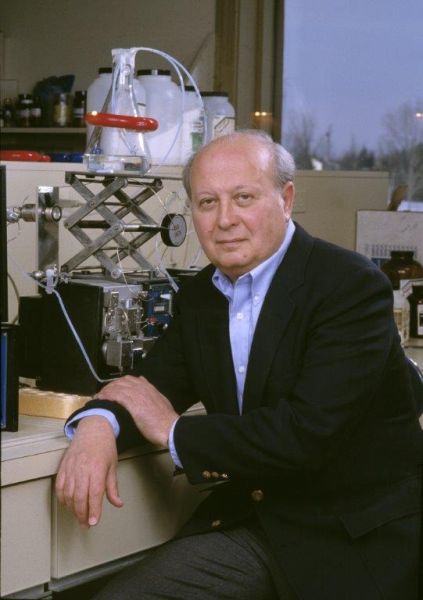Barney Rosenberg
1926-2009

Barney Rosenberg was born in New York City in 1926. In 1944, he left college to join the Army and was stationed in the Philippine Islands for the next 19 months working as a pharmacist.
After WW II, he attended Brooklyn College and graduated in 1948 with a B.S. in Physics. He spent the next year in Zurich, Switzerland, at the Federal Institute of Technology. He received his Ph.D. in physics from New York University in 1955, and was a postdoctoral fellow at NYU's Institute of Mathematical Sciences from 1955-56.
Between 1956-58 he worked at Westinghouse Electric Corporation. as a senior research physicist. Rosenberg joined MSU in 1961, and co-founded the biophysics department with Leroy Augenstein. He was a professor in the biophysics department (1961-1979) and in the chemistry department (1980-1997). In 1982, he founded Barros Research Institute in Holt, Mich., where he directed a diverse range of non-Pt related research projects until his death in 2009.
Saving countless lives – In 1963, while studying the effects electric fields on cell division, Rosenberg noted that Escherichia coli cells did not divide (as expected) but instead grew into long filaments. Recognizing that an agent that could prevent the cells from dividing might be useful in treating cancerous tumors, he began to look for the cause and soon concluded that it wasn’t due the electric field he was using, but a platinum compound that formed in solution when the Pt electrodes he was using oxidized in the solution’s ammonia/ammonium chloride buffer. This conclusion led to the development of cisplatin (cis-[Pt(NH3]2Cl4), which received FDA approval in 1978 and became the most effective and widely prescribed treatment for many cancer diagnoses.
Professor Rosenberg had a long and distinguished career and was the recipient of many awards, including: the Cain Memorial Award; the American Association of Cancer Research Award (1983); the Charles F. Kettering Prize given by the General Motors Cancer Research Foundation (1984); the Galileo Galilei (Gold) Medal from the University of Padua, Italy (1987); and the Harvey Prize from the University of Israel (1985).
Location in chemistry building:
Second Floor